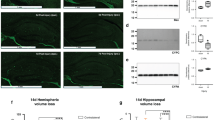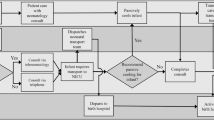Abstract
Background
Cooling delays, temperature outside 33–34 °C, and blood pressure below the mean arterial blood pressure with optimal cerebral autoregulation (MAPOPT) might diminish neuroprotection from therapeutic hypothermia in neonates with hypoxic–ischemic encephalopathy (HIE). We hypothesized that longer time to reach temperature <34 °C and having temperature outside 33–34 °C would be associated with worse autoregulation and greater brain injury.
Methods
Neonates with HIE had rectal temperature and near-infrared spectroscopy autoregulation monitoring during hypothermia (n = 63) and rewarming (n = 58). All underwent brain MRI, and a subset received diffusion tensor imaging MRI before day 10 (n = 41).
Results
Most neonates reached <34 °C at 3–6 h of life. MAPOPT was identified in 54/63 (86%) during hypothermia and in 53/58 (91%) during rewarming. Cooling time was not related to blood pressure deviation from MAPOPT. Later cooling was associated with lower ADC scalar in unilateral posterior centrum semiovale but not in other regions. Temperatures >34 °C were associated with blood pressure above MAPOPT but not with brain injury.
Conclusions
In neonates who were predominantly cooled after 3 h, cooling time was not associated with autoregulation or overall brain injury. Blood pressure deviation above MAPOPT was associated with temperature >34 °C. Additional studies are needed in a more heterogeneous population.
Impact
-
Cooling time to reach target hypothermia temperature within 6 h of birth did not affect cerebral autoregulation measured by NIRS in neonates with hypoxic–ischemic encephalopathy (HIE).
-
Temperature fluctuations >33–34 °C were associated with blood pressures that exceeded the range of optimal autoregulatory vasoreactivity.
-
Cooling time within 6 h of birth and temperatures >33–34 °C were not associated with qualitative brain injury on MRI.
-
Regional apparent diffusion coefficient scalars on diffusion tensor imaging MRI were not appreciably affected by cooling time or temperature >33–34 °C.
-
Additional research in a larger and more heterogeneous population is needed to determine how delayed cooling and temperatures beyond the target hypothermia range affect autoregulation and brain injury.
Similar content being viewed by others
Log in or create a free account to read this content
Gain free access to this article, as well as selected content from this journal and more on nature.com
or
References
Kurinczuk, J. J., White-Koning, M. & Badawi, N. Epidemiology of neonatal encephalopathy and hypoxic-ischaemic encephalopathy. Early Hum. Dev. 86, 329–338 (2010).
Shankaran, S. et al. Childhood outcomes after hypothermia for neonatal encephalopathy. N. Engl. J. Med. 366, 2085–2092 (2012).
Azzopardi, D. et al. Effects of hypothermia for perinatal asphyxia on childhood outcomes. N. Engl. J. Med. 371, 140–149 (2014).
Kali, G. T., Martinez-Biarge, M., Van Zyl, J., Smith, J. & Rutherford, M. Management of therapeutic hypothermia for neonatal hypoxic ischaemic encephalopathy in a tertiary centre in South Africa. Arch. Dis. Child. Fetal Neonatal Ed. 100, F519–F523 (2015).
Gunn, A. J. & Thoresen, M. Hypothermic neuroprotection. NeuroRx 3, 154–169 (2006).
Wassink, G., Gunn, E. R., Drury, P. P., Bennet, L. & Gunn, A. J. The mechanisms and treatment of asphyxial encephalopathy. Front. Neurosci. 8, 40 (2014).
Sabir, H., Scull-Brown, E., Liu, X. & Thoresen, M. Immediate hypothermia is not neuroprotective after severe hypoxia-ischemia and is deleterious when delayed by 12 h in neonatal rats. Stroke 43, 3364–3370 (2012).
Youn, Y. A. et al. The hospital outcomes compared between the early and late hypothermia-treated groups in neonates. J. Matern. Fetal Neonatal Med. 29, 2288–2292 (2016).
Thoresen, M. et al. Time is brain: starting therapeutic hypothermia within three hours after birth improves motor outcome in asphyxiated newborns. Neonatology 104, 228–233 (2013).
Tekes, A. et al. Apparent diffusion coefficient scalars correlate with near-infrared spectroscopy markers of cerebrovascular autoregulation in neonates cooled for perinatal hypoxic-ischemic injury. AJNR Am. J. Neuroradiol. 36, 188–193 (2015).
Lee, J. K. et al. Optimizing cerebral autoregulation may decrease neonatal regional hypoxic-ischemic brain injury. Dev. Neurosci. 39, 248–256 (2017).
Carrasco, M. et al. Cerebral autoregulation and conventional and diffusion tensor imaging magnetic resonance imaging in neonatal hypoxic-ischemic encephalopathy. Pediatr. Neurol. 82, 36–43 (2018).
Howlett, J. A. et al. Cerebrovascular autoregulation and neurologic injury in neonatal hypoxic-ischemic encephalopathy. Pediatr. Res. 74, 525–535 (2013).
Massaro, A. N. et al. Impaired cerebral autoregulation and brain injury in newborns with hypoxic-ischemic encephalopathy treated with hypothermia. J. Neurophysiol. 114, 818–824 (2015).
Vesoulis, Z. A., Liao, S. M. & Mathur, A. M. Late failure of cerebral autoregulation in hypoxic-ischemic encephalopathy is associated with brain injury: a pilot study. Physiol. Meas. 39, 125004 (2018).
Tian, F., Tarumi, T., Liu, H., Zhang, R. & Chalak, L. Wavelet coherence analysis of dynamic cerebral autoregulation in neonatal hypoxic-ischemic encephalopathy. Neuroimage Clin. 11, 124–132 (2016).
Burton, V. J. et al. A pilot cohort study of cerebral autoregulation and 2-year neurodevelopmental outcomes in neonates with hypoxic-ischemic encephalopathy who received therapeutic hypothermia. BMC Neurol. 15, 209 (2015).
Shankaran, S. et al. Whole-body hypothermia for neonates with hypoxic-ischemic encephalopathy. N. Engl. J. Med. 353, 1574–1584 (2005).
Chavez-Valdez, R. et al. Associations between cerebrovascular blood pressure autoregulation and cardiopulmonary injury may be sex-specific in neonates treated with therapeutic hypothermia for hypoxic-ischemic encephalopathy. Pediatr. Res. 81, 759–766 (2017).
Lee, J. K. et al. Relationships between cerebral autoregulation and markers of kidney and liver injury in neonatal encephalopathy and therapeutic hypothermia. J. Perinatol. 37, 938–942 (2017).
Larson, A. C. et al. Cerebrovascular autoregulation after rewarming from hypothermia in a neonatal swine model of asphyxic brain injury. J. Appl. Physiol. 115, 1433–1442 (2013).
Lee, J. K. et al. Cerebrovascular reactivity measured by near-infrared spectroscopy. Stroke 40, 1820–1826 (2009).
Pappas, A. et al. Hypocarbia and adverse outcome in neonatal hypoxic-ischemic encephalopathy. J. Pediatr. 158, 752–758.e751 (2011).
Nusbaum, D. M., Brady, K. M., Kibler, K. K. & Blaine Easley, R. Acute hypercarbia increases the lower limit of cerebral blood flow autoregulation in a porcine model. Neurol. Res. 38, 196–204 (2016).
Gunn, A. J., Gunn, T. R., de Haan, H. H., Williams, C. E. & Gluckman, P. D. Dramatic neuronal rescue with prolonged selective head cooling after ischemia in fetal lambs. J. Clin. Invest. 99, 248–256 (1997).
Bevers, M. B. et al. Apparent diffusion coefficient signal intensity ratio predicts the effect of revascularization on ischemic cerebral edema. Cerebrovasc. Dis. 45, 93–100 (2018).
Roelfsema, V. et al. Window of opportunity of cerebral hypothermia for postischemic white matter injury in the near-term fetal sheep. J. Cereb. Blood Flow Metab. 24, 877–886 (2004).
Guillot, M. et al. Influence of timing of initiation of therapeutic hypothermia on brain MRI and neurodevelopment at 18 months in infants with HIE: a retrospective cohort study. BMJ Paediatr. Open 3, e000442 (2019).
da Costa, C. S., Czosnyka, M., Smielewski, P. & Austin, T. Optimal mean arterial blood pressure in extremely preterm infants within the first 24 h of life. J. Pediatr. 203, 242–248 (2018).
O’Brien, C. E. et al. Hypoxia-ischemia and hypothermia independently and interactively affect neuronal pathology in neonatal piglets with short-term recovery. Dev. Neurosci. 41, 17–33 (2019).
Santos, P. T. et al. Proteasome biology is compromised in white matter after asphyxic cardiac arrest in neonatal piglets. J. Am. Heart Assoc. 7, e009415 (2018).
Wang, B. et al. White matter apoptosis is increased by delayed hypothermia and rewarming in a neonatal piglet model of hypoxic ischemic encephalopathy. Neuroscience 316, 296–310 (2016).
Wang, B. et al. Rewarming from therapeutic hypothermia induces cortical neuron apoptosis in a swine model of neonatal hypoxic-ischemic encephalopathy. J. Cereb. Blood Flow Metab. 35, 781–793 (2015).
Olsen, S. L. et al. Optimizing therapeutic hypothermia for neonatal encephalopathy. Pediatrics 131, e591–e603 (2013).
DuPont, T. L. et al. Short-term outcomes of newborns with perinatal acidemia who are not eligible for systemic hypothermia therapy. J. Pediatr. 162, 35–41 (2013).
Lopez Laporte, M. A. et al. Association between hypocapnia and ventilation during the first days of life and brain injury in asphyxiated newborns treated with hypothermia. J. Matern. Fetal Neonatal Med. 32, 1312–1320 (2019).
Acknowledgements
We are grateful to Claire Levine, MS, ESL for her editorial assistance. This study was supported by funding from the National Institutes of Health (grant numbers R01NS107417, R01NS109029, and K08NS080984 [to J.K.L.]; K08NS096115 [to R.C.-V.]; R01HD070996 and R01HD086058 [to F.J.N.]; and R01NS107417 [to A.T.]); the American Heart Association Transformational Project Award (co-funded by the Lawrence J. and Florence A. DeGeorge Charitable Trust; 18TPA34170077 [to J.K.L.]); the Johns Hopkins University-School of Medicine Clinician Scientist Award (to R.C.-V.); and the Sutland-Pakula Endowment for Neonatal Research (to R.C.-V.).
Author information
Authors and Affiliations
Contributions
Substantial contributions to conception and design, acquisition of data, or analysis and interpretation of data: all authors. Drafting the article or revising it critically for important intellectual content: M.M.G., A.T., J.P., R.C.-V., F.J.N., and J.K.L. Final approval of the version to be published: all authors.
Corresponding author
Ethics declarations
Competing interests
J.K.L., F.J.N., M.M.G., and R.C.-V. received research support from Medtronic for a separate study. J.K.L. was also a paid consultant for Medtronic, and she received research support from Casmed. These arrangements have been reviewed and approved by the Johns Hopkins University in accordance with its conflict of interest policies. Medtronic and Casmed had no role in the design of the current study, collection or analysis of the data, interpretation of the results, manuscript writing, or in our decision to submit this manuscript for publication. A.T., J.P., H.S., and C.P. have nothing to declare.
Additional information
Publisher’s note Springer Nature remains neutral with regard to jurisdictional claims in published maps and institutional affiliations.
Supplementary information
Rights and permissions
About this article
Cite this article
Gilmore, M.M., Tekes, A., Perin, J. et al. Later cooling within 6 h and temperatures outside 33–34 °C are not associated with dysfunctional autoregulation during hypothermia for neonatal encephalopathy. Pediatr Res 89, 223–230 (2021). https://doi.org/10.1038/s41390-020-0876-8
Received:
Revised:
Accepted:
Published:
Issue date:
DOI: https://doi.org/10.1038/s41390-020-0876-8



